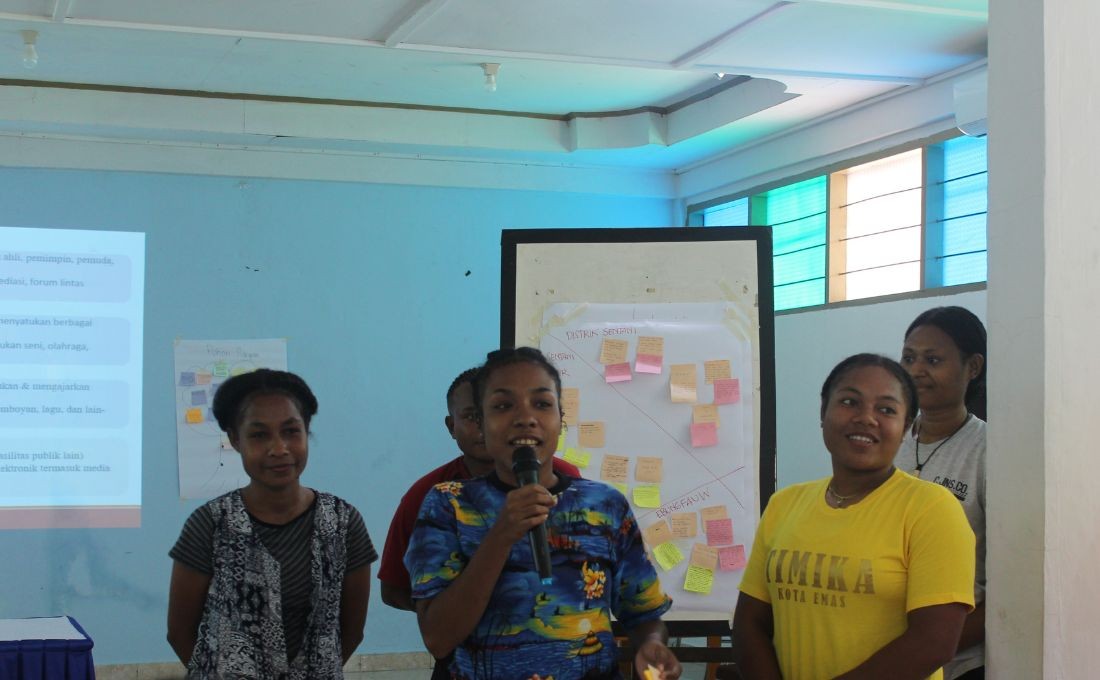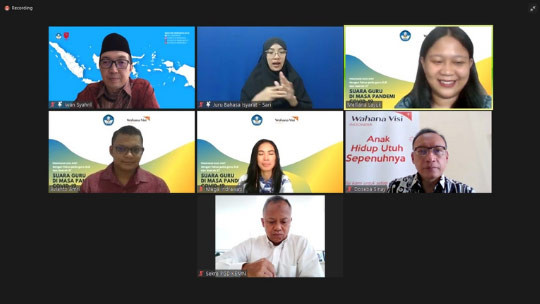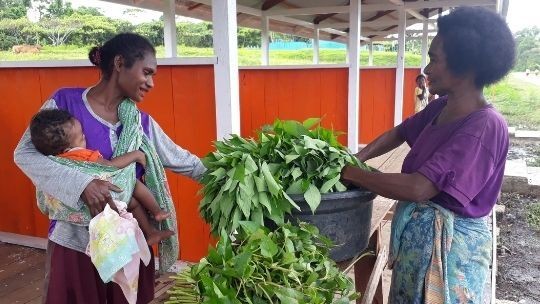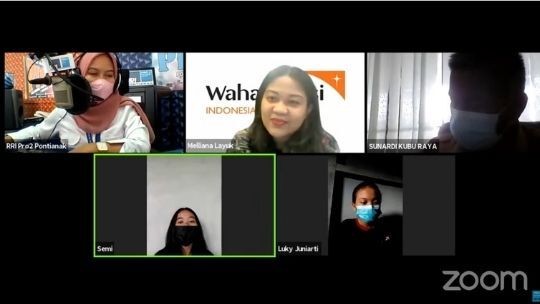Youth in Three Districts Unite Build Harmony

Behind every incident of violent conflict, there are always victims, for example, women and children who feel insecure, and unable to study and carry out their usual activities. the NOKEN (Community Transformation for Harmony) program in Papua of Wahana Visi Indonesia (WVI) works with church partners to increase the capacity of youth as agents of change in society to unite to prevent violent conflict. One of them is through a training entitled "Viewing Conflict from the Eyes of a Powerful Human Being" on August 25-26, 2022.
Through this training, youths from three districts in Jayapura, Papua unite their hearts and minds and develop a joint plan for community harmony in Jayapura. The activity begins with a basic understanding of the conflict. Through discussions of daily experiences and Biblical reflection, youth understand that conflict can take many forms.
“Young people think about conflict, it's just a problem or enmity, the main thing is that it's about beatings. We just think broadly so. But from this material… Tong (we) learn that it turns out that the understanding of conflict is very broad. There is a conflict with oneself, with others, with groups, with society, and even with the state. Conflict is not to be avoided. The conflict was given when we were born,” said Rhut, repeating the material obtained enthusiastically.
Conflict is inevitable in human life. The way we manage it determines whether conflict brings good and growth, or vice versa brings hostility and destruction.
“I am happy with this activity because it opens up my mind to manage things that we don't need to do that way. For example, violent conflicts, inter-ethnic brawls that often happen in our lives… So far, we have had such conflicts, but we don't know what happens. will happen behind. So we are starting to be able to distinguish between this conflict and this conflict, it turns out that the conflict that makes us split between friends is violent. If it's not violent, the conflict will only last for a while, then we'll get back together,” said Jonathan (28), a young man from the East Sentani District.
Through discussion and role-playing, the youth realized that intergroup conflict can be managed positively by reducing bad perceptions and increasing compassion in interacting with other people/groups. Equally important, youth are increasingly aware of their important role as agents of change in managing conflict.
Youth are invited to place themselves as leaders in the community (village heads, tribal heads, parents, and teachers) to identify challenges in building harmony in the community. They then identify opportunities or things youth can do to address those challenges.
"We usually say 'ah, I'm still very young, I can't do this,' it means that at the very least, we're talking about young people, the older people won't respond to us. But here, in this activity, we teach that we must contribute to them (them), so that there are problems, or if not problems. the activities or what Tong did with the youth went well,” said Rhut (19), another young man.
At the end of the activity, the youth expressed their vision and faith action. Youth from each district unite their hopes for an ideal community environment into a common vision: “Foy Reay Yo Re, Himi Reay U Re” (which is not good for me, which is good for the village).
“It means: Something that I did is good for the village, but other people said 'ah, what can you do,' 'it's not good where you learn from it.. but let's talk, the results are good.. what the community gets that. Let me be insulted by trapapa, the important thing is that I have done good things," said Jonathan.
The youths then made plans for social cohesion activities aimed at increasing the sense of community togetherness, in the form of the “Sentani Youth Festival” event in November 2022. Jonathan as the activity coordinator stated that he was very ready to lead inter-district youth cooperation.
Written by: Andina Larasati, MELC of Noken Program Wahana Visi Indonesia



